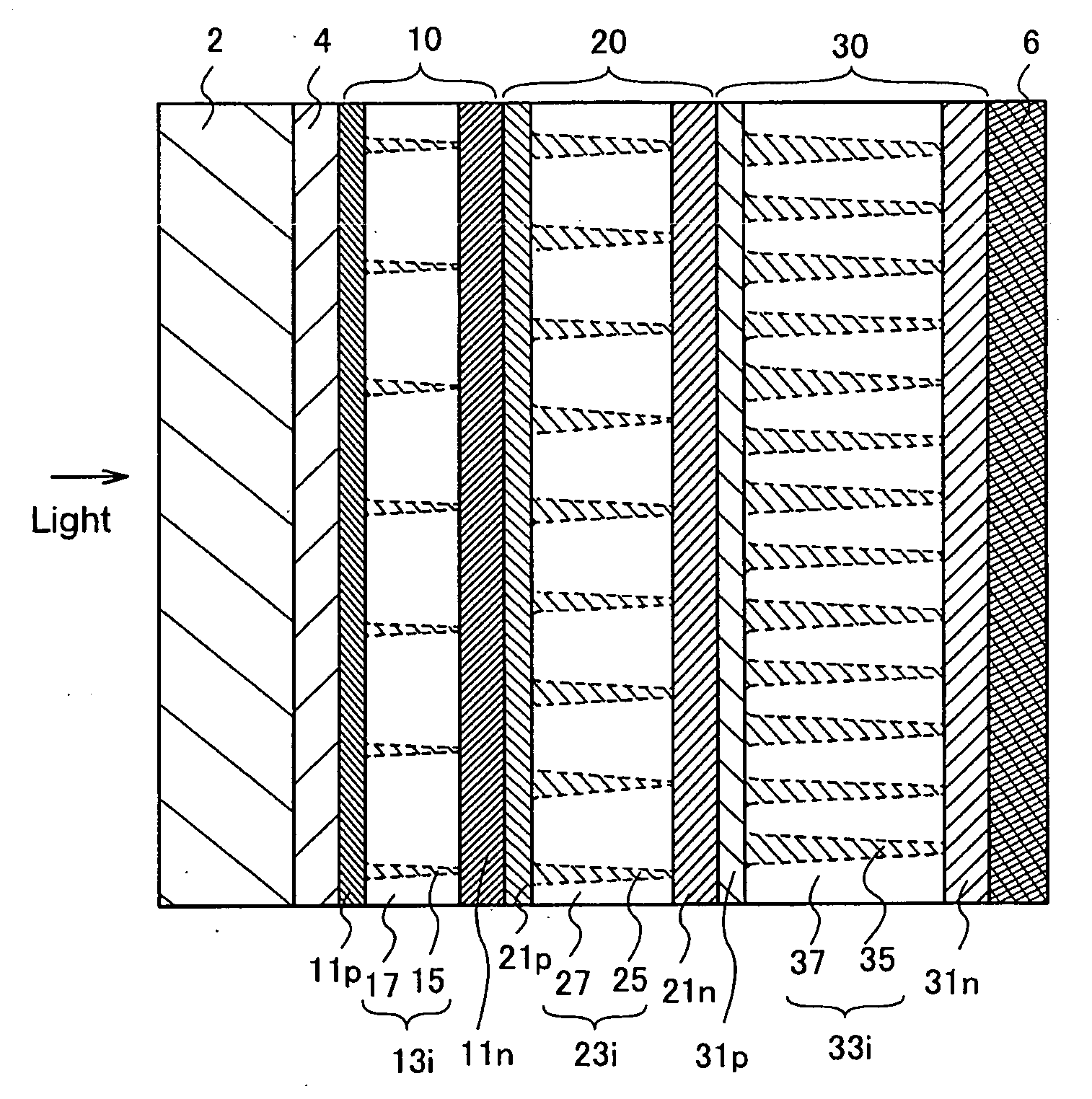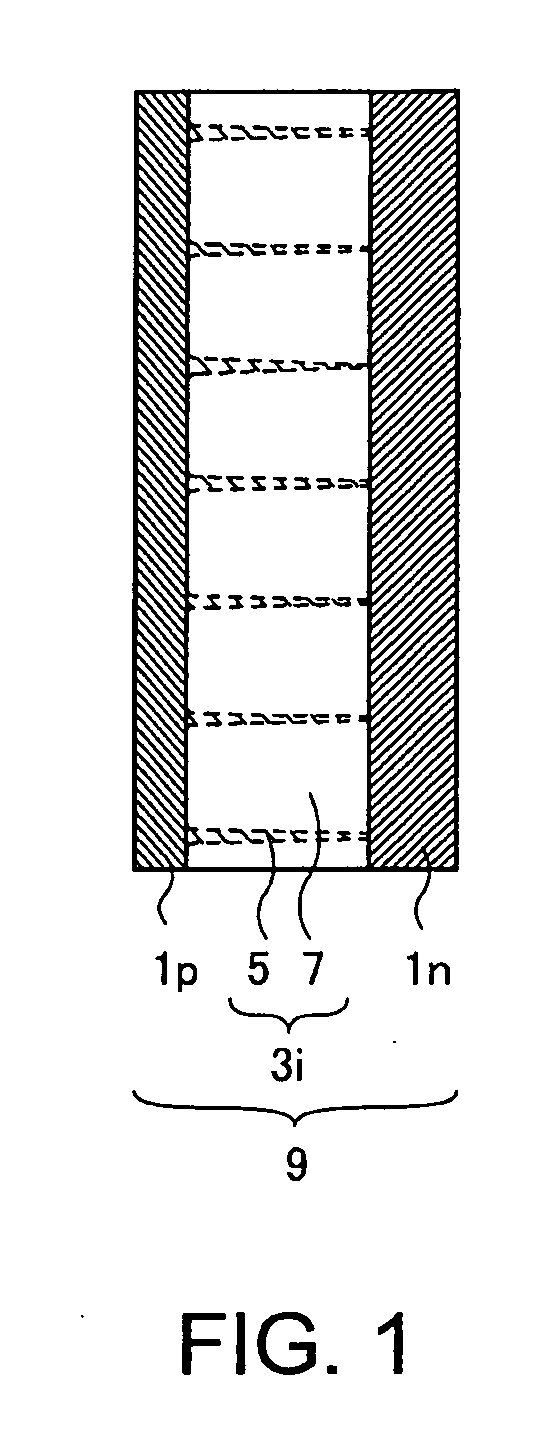Photoelectric Conversion Device And Method For Manufacturing The Same
a technology photoelectric conversion device, which is applied in the field can solve the problems of low deposition rate, inconvenient use, and inferior productivity of photoelectric conversion device including microcrystalline silicon to those including amorphous silicon, and achieves the effects of reducing production costs, reducing production costs, and improving efficiency
- Summary
- Abstract
- Description
- Claims
- Application Information
AI Technical Summary
Benefits of technology
Problems solved by technology
Method used
Image
Examples
embodiment 1
[0069]According to an embodiment of the present invention, a semiconductor layer which performs photoelectric conversion includes crystals in an amorphous structure and the crystals penetrate between a pair of impurity semiconductor layers bonded for forming an internal electric field. Embodiment 1 shows a photoelectric conversion device in which a plurality of unit cells is stacked. In the case of applying an embodiment of the present invention to a tandem or stack photoelectric conversion device, a semiconductor layer including in an amorphous structure, crystals penetrating between a pair of impurity semiconductor layers bonded for forming an internal electric field is used as a photoelectric conversion layer in at least one unit cell.
[0070]FIG. 1 is a schematic view of a unit cell according to an embodiment of the present invention. A unit cell according to an embodiment of the present invention has a structure in which a semiconductor layer 3i including in an amorphous structur...
embodiment 2
[0123]Embodiment 2 describes a photoelectric conversion device having a different structure from that described in Embodiment 1. Specifically, the number of stacked unit cells in the photoelectric conversion device of this example is different from that illustrated in FIG. 2.
[0124]FIG. 5A illustrates a single junction photoelectric conversion device including one unit cell. In this photoelectric conversion device which includes at least one semiconductor junction, a unit cell 40 is formed over a substrate 2 provided with a first electrode 4 and a second electrode 6 is formed over the unit cell 40. The unit cell 40 includes a stack of an impurity semiconductor layer 41p, which is a p-type semiconductor, a semiconductor layer 43i, which is an i-type semiconductor, and an impurity semiconductor layer 41n, which is an n-type semiconductor. In the semiconductor layer 43i, crystals 45 are provided discretely in an amorphous structure 47. The crystals 45 penetrate through the semiconductor...
embodiment 3
[0127]Embodiment 3 describes a photoelectric conversion device with a different structure from that in Embodiment 1 or 2. Specifically, an example is shown in which a junction portion between an impurity semiconductor layer having one conductivity type and an intrinsic semiconductor layer is provided with an impurity semiconductor layer having the same conductivity type as the one conductivity type and having lower impurity concentration than the impurity semiconductor layer having the one conductivity type.
[0128]Each of FIGS. 6A to 6C illustrates a stacked photoelectric conversion device in which three unit cells are formed. In FIG. 6A, a first unit cell 10, a second unit cell 20, a third unit cell 30, and a second electrode 6 are provided in that order over a substrate 2 provided with a first electrode 4. In the first unit cell 10, a first impurity semiconductor layer 11p, a first low-concentration impurity semiconductor layer 12p−, a first semiconductor layer 13i, and a second im...
PUM
 Login to View More
Login to View More Abstract
Description
Claims
Application Information
 Login to View More
Login to View More - R&D
- Intellectual Property
- Life Sciences
- Materials
- Tech Scout
- Unparalleled Data Quality
- Higher Quality Content
- 60% Fewer Hallucinations
Browse by: Latest US Patents, China's latest patents, Technical Efficacy Thesaurus, Application Domain, Technology Topic, Popular Technical Reports.
© 2025 PatSnap. All rights reserved.Legal|Privacy policy|Modern Slavery Act Transparency Statement|Sitemap|About US| Contact US: help@patsnap.com



